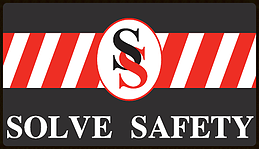Title Page
-
Conducted on
-
Prepared by
-
Location
-
Sector
-
Business Unit
-
Site
-
Inspected by
-
Select date
General Summary (including progress since previous inspection and any remaining open items):
Inspection questions
Induction
-
Effective induction for the various types of visitor (general visitor, contractors, drivers, etc.) covering relevant risks and control measures<br>
Housekeeping
-
All areas of the site in good condition, including offices, welfare facilities, workshops, etc.<br>
-
Notice boards are organised and up to date, displaying latest Safety Alerts<br>
-
Pedestrian routes and stairways fitted with suitable handrails, clear of slip / trip hazards and adequately lit<br>
-
Suitable storage for tools and equipment<br>
-
Process spillage kept to a minimum<br>
Personal Protective Equipment - PPE (Refer to Global Standard) & Occupational Health
-
All personnel in production / operational areas wearing required PPE including, as a minimum; safety helmet, eye protection, high visibility clothing, gloves and lace up ankle boots. Additional PPE worn as necessary, e.g. hearing and respiratory protection, full body harness, etc. <br>
-
PPE in good condition, with suitable arrangements for maintenance, cleaning, storage and replacement<br>
-
Relevant measures implemented at source to safeguard people's health e.g. control of noise, dust and muskuloskeletal hazards, etc.<br>
Traffic Management (Refer to Global Standard)
-
Traffic routes designed, constructed and maintained to ensure safe movement of vehicles and pedestrians on / off and around the site, and displayed on a traffic management plan at / near the site entrance where possible<br>
-
Directional signage, speed limits, parking (first move forwards), height restrictions and one way routes in place<br>
-
Pedestrian routes clearly marked with appropriate signage and segregated from vehicles, where possible by physical barriers<br>
-
Areas for loading / unloading, sheeting / netting of loads and vehicle maintenance separated from main traffic routes<br>
-
Demarcated and suitable loading / unloading areas, including exclusion zones for tipping operations<br>
-
Barriers in place at open edges, tip off points and beneath excavations (rock traps)<br>
Machinery Guarding (Refer to Global Standard)
-
Secure close fitted guards enclose all dangerous parts of machinery or, where impractical, other effective controls in place, e.g. distance guarding, interlocked guards, light curtains, etc.<br>
-
Where distance guards are used, regular access points are controlled via an interlocked isolation system<br>
-
General maintenance, such as conveyor alignment, greasing, etc. can be completed without removing guards<br>
Machinery Isolation (Refer to Global Standard)
-
Robust LOTOTO procedures in place and communicated, which ensure all forms of energy are isolated and consider equipment upstream and downstream as necessary<br>
-
The procedures consider equipment operated by sensors / timers and ensure it is not possible to enter a "live" area from an isolated area<br>
-
Isolation points are conveniently located and all switches, valves and machinery are clearly labelled to avoid any confusion<br>
-
Isolation stations include individual padlocks, multi lock hasps and tags; master and duplicate keys are prohibited<br>
-
Individual padlocks and tags are used by everyone working on equipment<br>
-
Readily accessible / identifiable emergency stop systems are fitted to all relevant machinery<br>
Vehicle Isolation (Refer to Global Standard)
-
Procedures are in place to ensure work on or around vehicles takes place in a designated safe area (firm / level ground) with vehicles isolated (engine off, keys retained and park brake applied), warning signage displayed and wheel chocks used<br>
-
No evidence of vehicles being left unsecured or with engines running<br>
Work at Height (Refer to Global Standard)
-
Where work at height has not been eliminated, permanent platforms are in place where practical, in good condition and fitted with well maintained secure guardrails and toe / kickboards<br>
-
Where temporary access is being carried out, suitable safe access equipment is used, along with appropriate full body harness, fall arrest and retrieval equipment; effective anchor points are available and dual lanyards are used where there is a need to detach / re-attach at height<br>
-
Portable ladders are kept secure and only used for low risk, short duration tasks<br>
-
Effective control measures are in place for work on top of vehicles<br>
Confined Spaces (Refer to Global Standard)
-
All confined / enclosed spaces have been identified, with hatches, doorways, etc. secured during normal operations and suitable procedures in place where access is required, including the requirement for Permit to Work<br>
Water Safety (Refer to Global Standard)
-
Hazardous areas of water have been identified, marked with suitable warning signage, provided with sufficient emergency equipment and guarded where practical<br>
-
Pontoons and vessels for working over water are suitable, with safe access / egress and lifejackets worn as required.<br>
Electricity
-
All electrical panels are secured and clearly labelled with hazard warning and maximum voltage<br>
-
Access to electrical circuits is restricted to authorised / trained personnel only<br>
Preventative Maintenance Schemes
-
Suitable formal inspection and defect reporting systems are in place for processing plant and vehicles<br>
Permit to Work
-
"An effective Permit to Work system is in place covering high risk activities and contract work (excluding agency workers, or work deemed to be very low risk), in accordance with Element 2 of the CEMEX Health and Safety Management System<br>"<br>
Risk Management
-
Evidence that risk assessments processes are being actively used on site<br>
-
Guidelines are in place identifying when pre task / personal risk assessments are required (Take 5 / STOP / Worksafe).<br>
-
All relevant personnel have been trained in pre task / personal risk assessments and they are carried out effectively and in accordance with the guidelines<br>
Contractor Management
-
Contract work is carried out in accordance with a documented plan of work, including job hazard analysis / risk assessment, method statements and Permits to Work proportionate to the level of risk<br>
-
The competency of contract personnel is verified during their induction<br>
-
Contract personnel are required to sign in / out on arrival / departure from site<br>
-
Contract works are effectively supervised and formally handed over on completion<br>
Emergency Procedures / First Aid
-
Emergency arrangements in place, including alarms, fire fighting equipment, emergency lights, escape routes and assembly points<br>
-
Vehicles - Mobile Plant / Equipment
-
Mobile Plant Equipment is fitted with necessary safety features in accordance with Global Standards, including seat belt, lighting, horn, mirrors / cameras, reverse warning, etc., which are used and also maintained in good condition through a formal pre start inspection and maintenance scheme<br>
Vehicles - Road Haulage
-
Haulage vehicles are fitted with necessary safety features in accordance with Global Standards, including seat belt, lighting, horn, mirrors / cameras, reverse warning, etc., which are used and also maintained in good condition through a formal pre start inspection and maintenance scheme<br>
-
Vehicles are also fitted with minimum safety features to protect vulnerable road users including correctly adjusted "blind spot" mirrors, rear facing cyclist warning sign, side underun bars / signage and sidescan sensors. <br>
Near Miss Reporting & Safety Alerts
-
Near Miss / Hazard Alert reporting is actively encouraged and readily available<br>
-
Safety Alerts have been communicated to employees and contractors, with signatures to confirm receipt and understanding of the information, and physical evidence of action being taken following Alerts where appropriate<br>
Additional Observations
-
Additional Observations
-
Good Practices Identified
-
Good Practices
-
Additional Observations
-
Additional Observations
-












